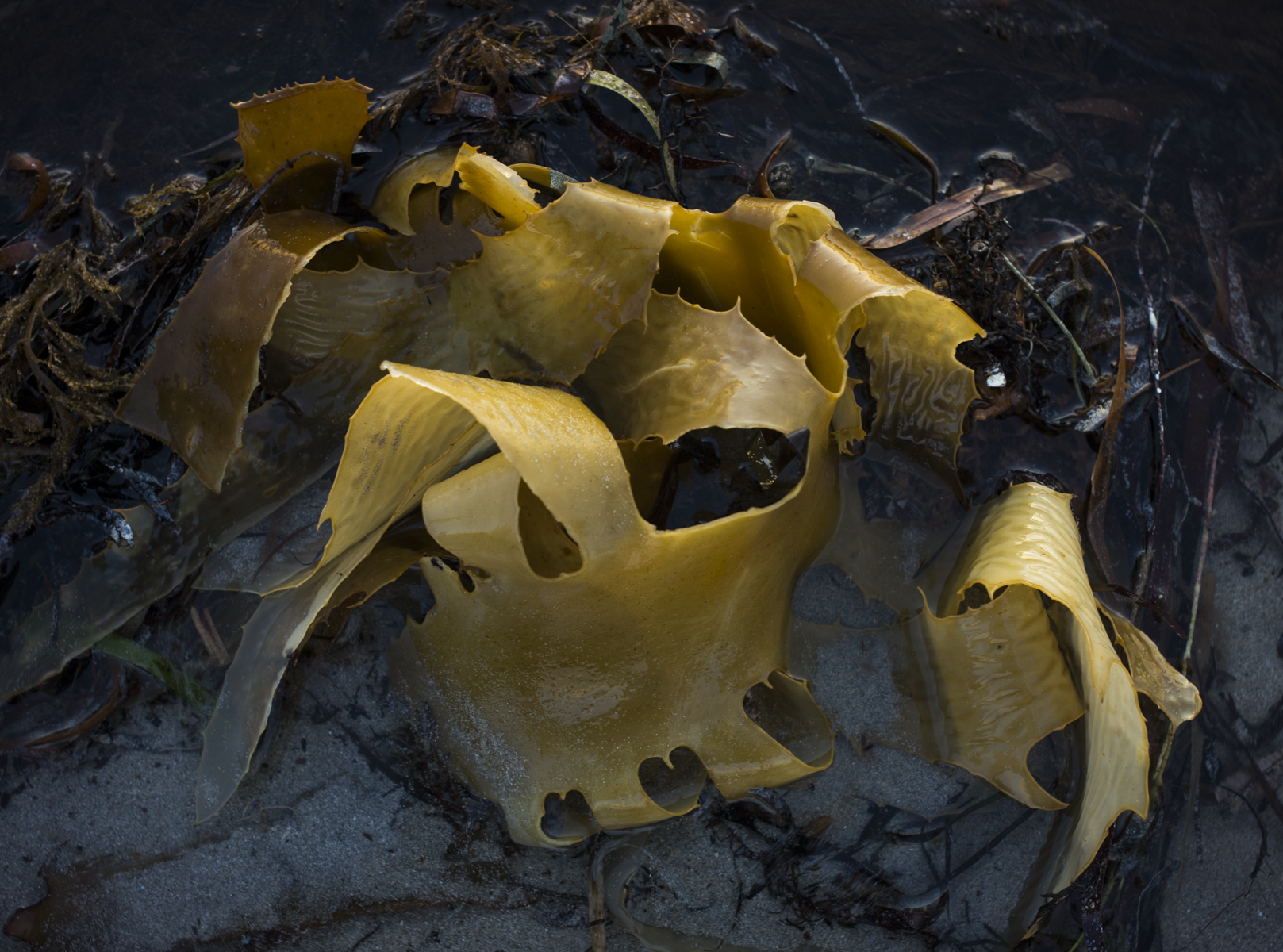3 of the coastal images have been included in the salon style Swatch exhibition at Fabrik in Lobethal for the SALA Festival. The 3 works are amongst 140 other pieces in Fabrik. However, exhibiting in SALA in group shows is more of the same, and no doubt as the exhibition is here today and gone tomorrow, the 3 small images will be quickly forgotten. No more exhibitions are planned.
I try to address the ho hum feeling by varying the form and lighting of the seaweed photos–eg., there is either an emphasis on dark abstraction, or on seaweed in the morning light:
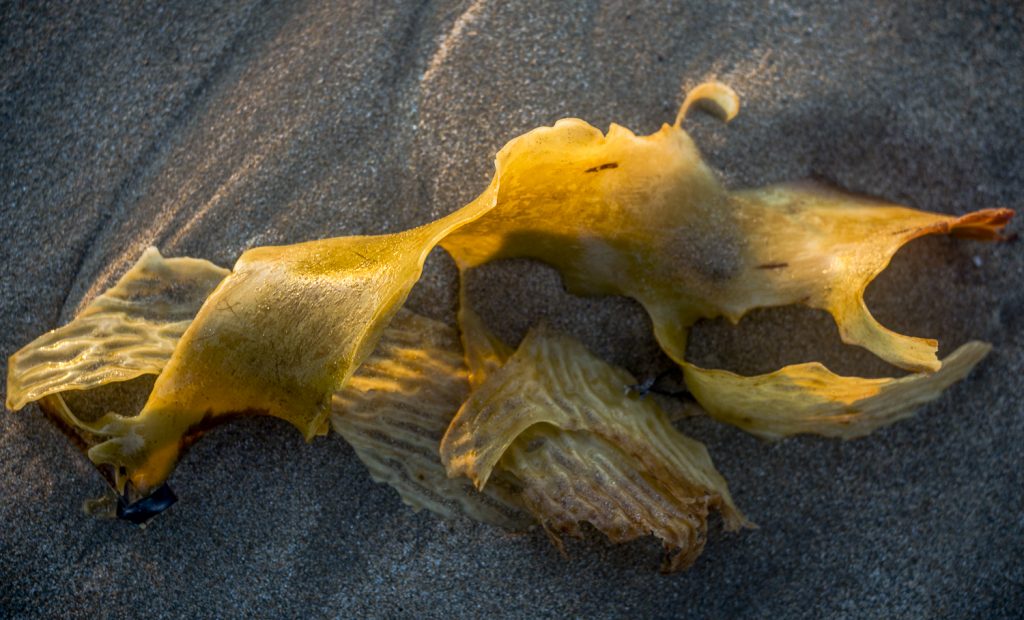
My problem is that there is definitely a limit to photographing seaweed, and that there is little else on these town beaches to photograph. Sure there is the erosion of the sand dunes from the high tides and winter storms, the sand abstractions or the melaleucas along Esplanade Beach.
Of course, there is always the iconic Causeway to Granite Island in the early morning winter light. There are always a number of people walking across it whilst on their early morning walks, but as I cannot take the poodles onto the causeway, I can only photograph in whilst standing on the beach:
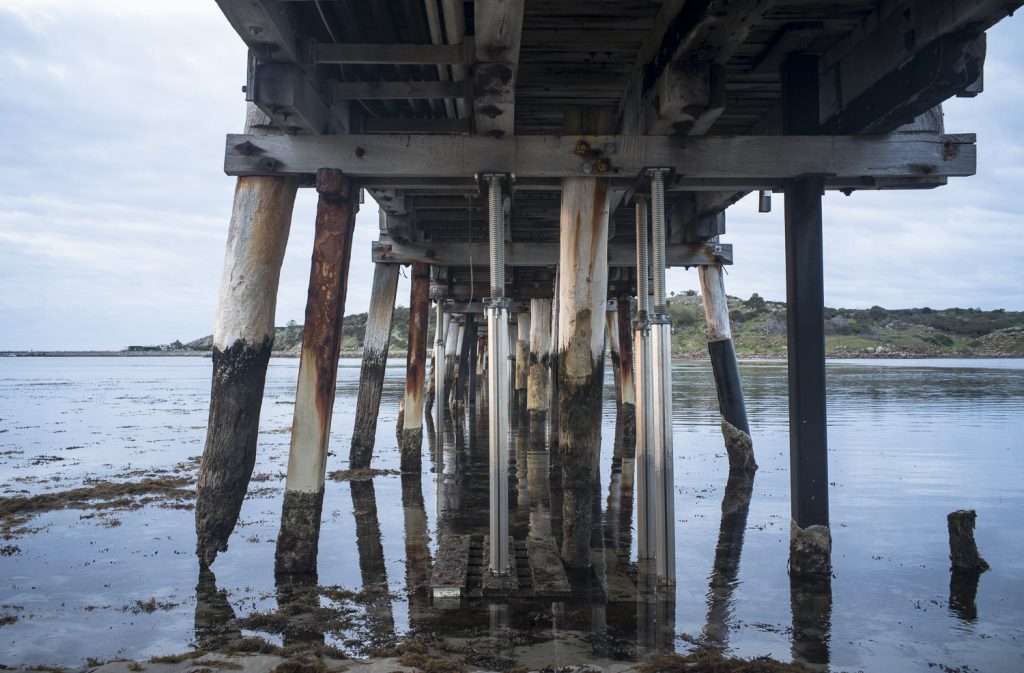
But how many times can this tourist Causeway be photographed before it becomes a cliched tourist snap? It is only interesting now because it is old, unsafe and propped up with steel supports. The Causeway is in need of substantial repair.
Occasionally there are interesting cloud formations across Encounter Bay in the early morning, though these are very infrequent, even during the winter:
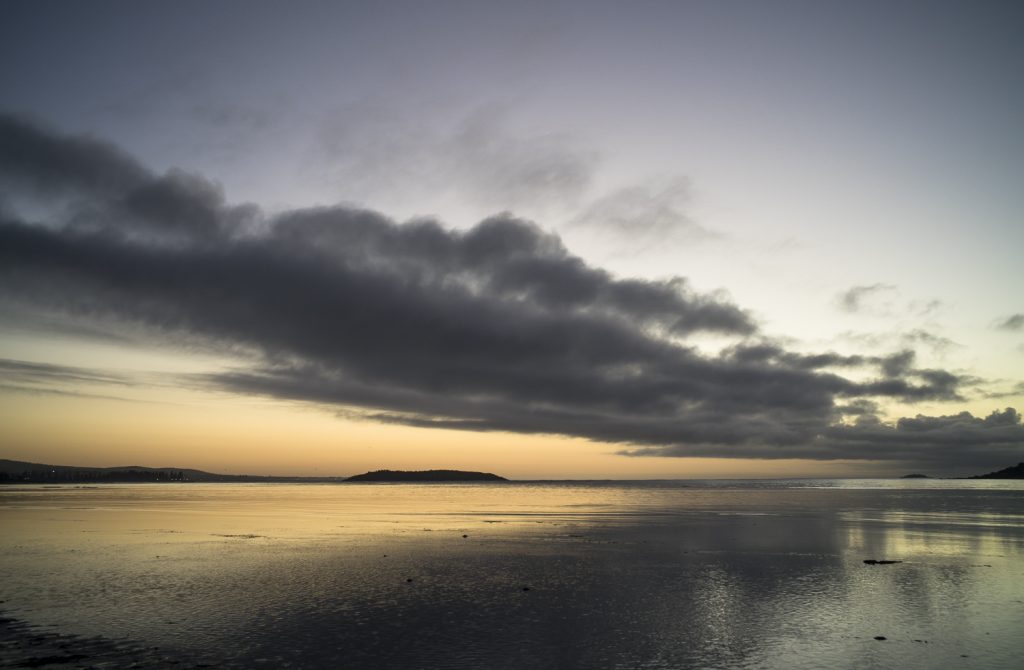
So, of late, the photography whilst on the poodlewalks along the town beaches has become a bit of a struggle. I am finding it difficult to overcome the sense of dull repetition that quickly becomes a cliche: easy on the eye, easy on the brain, hackneyed and third-hand.
I do try to avoid the tourist gaze which is a way of seeing that is constructed through mobile images and representational technologies, and which is tied into, and enabled by, various technologies, including camcorders, film, TV, cameras and digital images. Historically photography has been, and is, central to development of the tourist gaze.
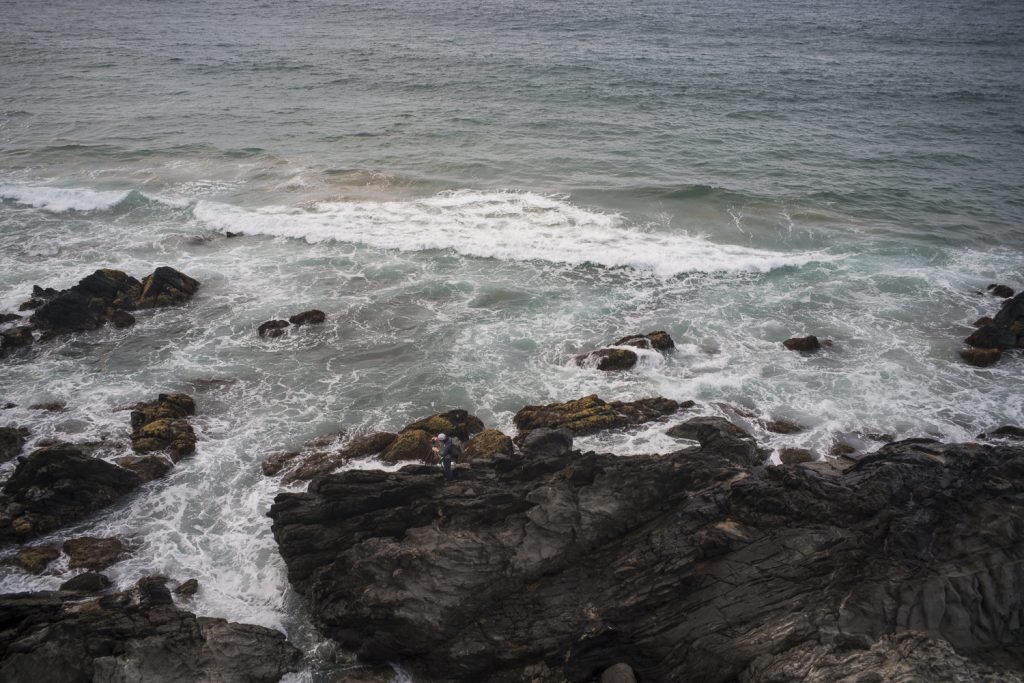
Once these charming pictures of natural beauty were produced by commercial photographers for the tourism industry, and they were usually found in the books and postcard section of the local newsagents. These dreaming pictures are now produced by day tourist hobbyists with digital cameras in search of the photogenic. This is part of the fun and pleasure of being on holiday from the daily routines of work. The pictures are usually uploaded to Flickr or Facebook and viewed on computer screens in a networked society.
The photographs of the tourist gaze are the outcome of an active signifying practice in which photographers select, structure and shape what is going to be taken and how. In particular– ie., the southern Fleurieu Peninsula—there is the attempt to construct idealised images which beautify the object being photographed. The result of this particular kind of socially constructed tourist perception, is a construction, and over representation of, the coastal landscapes as a tourism place.
